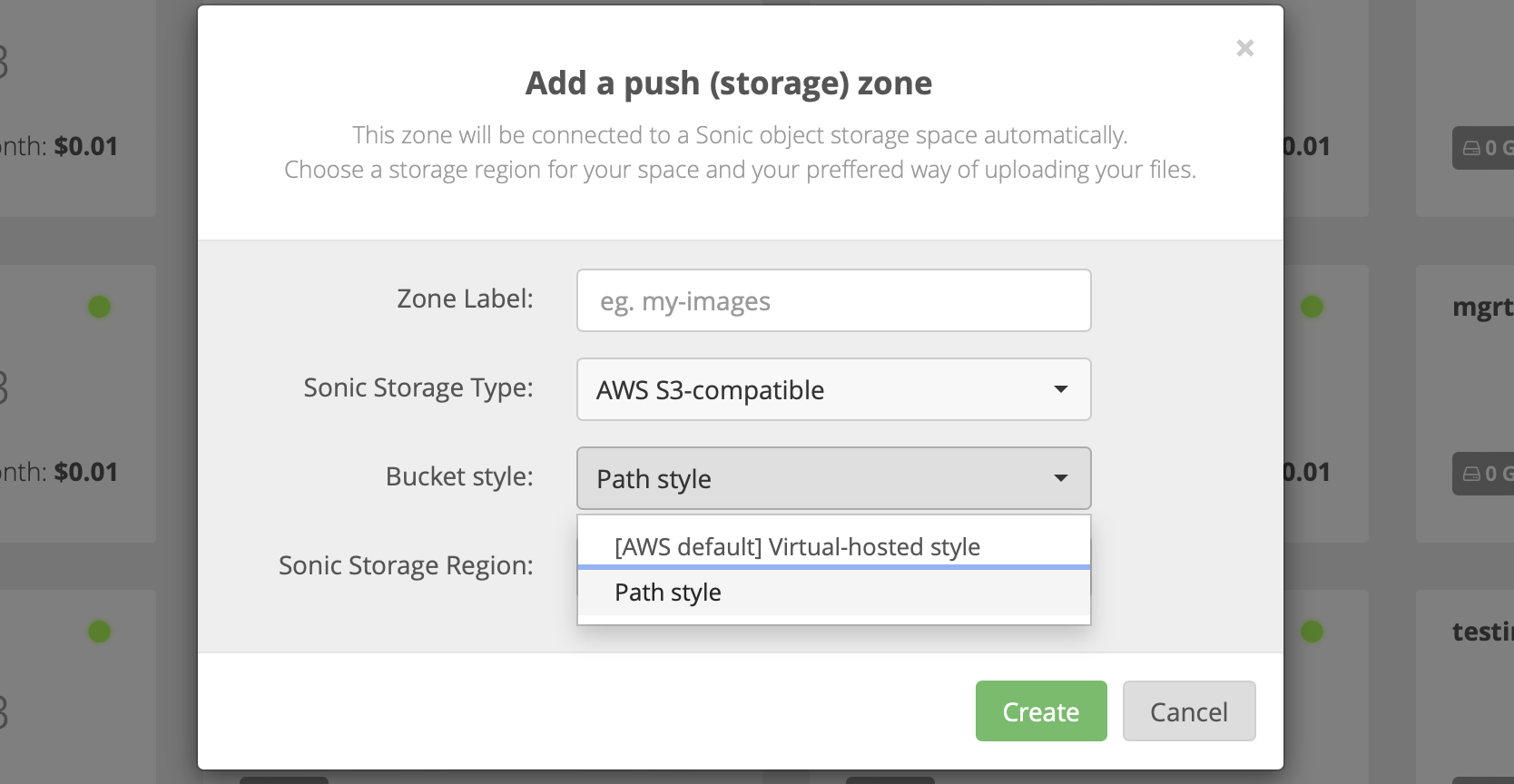Sonic now supports hosted-style S3 buckets

I am happy to announce that Sonic now supports hosted-style buckets. This update of our S3-compatible storage service allows for wider integration with various tools and desktop clients that support S3 API operations. The new feature is enabled as the default bucket style upon zone creation for all new storage zones and brings the following improvements:
Even easier to integrate 👨💻
As virtual-hosted style buckets are the de-facto standard and AWS has already announced it's intention to deprecate and disable the older path-style buckets, most S3 modules, clients and tools available today have already adopted to default to virtual-hosted style requests to buckets. Previously, these would require some extra steps to configure for proper integration with Sonic. The introduction of the virtual-hosted style buckets eliminates these steps and makes integration with Sonic even easier than before. Just change the endpoint URL, access and private keys, and enter the bucket name in your app, and plug-in a fast, pay-as-you-go storage solution at $0.008/GB with virtually unlimited scalability 🔌
Built-in edge network ⚡
Path-style buckets on Sonic required you to use the S3 endpoint to manage your content, and the provided CDN hostname to deliver it, however the CDN hostname did not follow the typical virtual-hosted style, so you've had to do this manually. This approach is less than optimal, especially when changes to existing code and tools need to be made. With hosted-style buckets the S3 endpoint provided by Sonic is now the same URL that you would use to deliver your content by adding the bucket name in front, with all requests routed through our global edge network for maximum speed, minimum latency and caching close to the users by default 💪
Creating a virtual-hosted style bucket

We've added the bucket style option to the push (storage) zone creation screen in our dashboard. It is now the one that is selected by default. You still have option use the old, path-based bucket style. Each storage zone that you create has its own bucket and Pushr does not limit the amount of zones that you can create.
Example
You've created a storage zone in Sonic's Germany region. We automatically assign a unique bucket name (actually a number), for example 1415. The region S3 endpoint is available at https://s3.de01.sonic.r-cdn.com and your content is directly accessible from https://1415.s3.de01.sonic.r-cdn.com
Path style buckets will not be removed
Path style buckets should now be considered legacy, but we have no plans of removing the option to create them at this point and existing integrations of our service into third-party tools and apps will not be affected. No action is required.
✌


